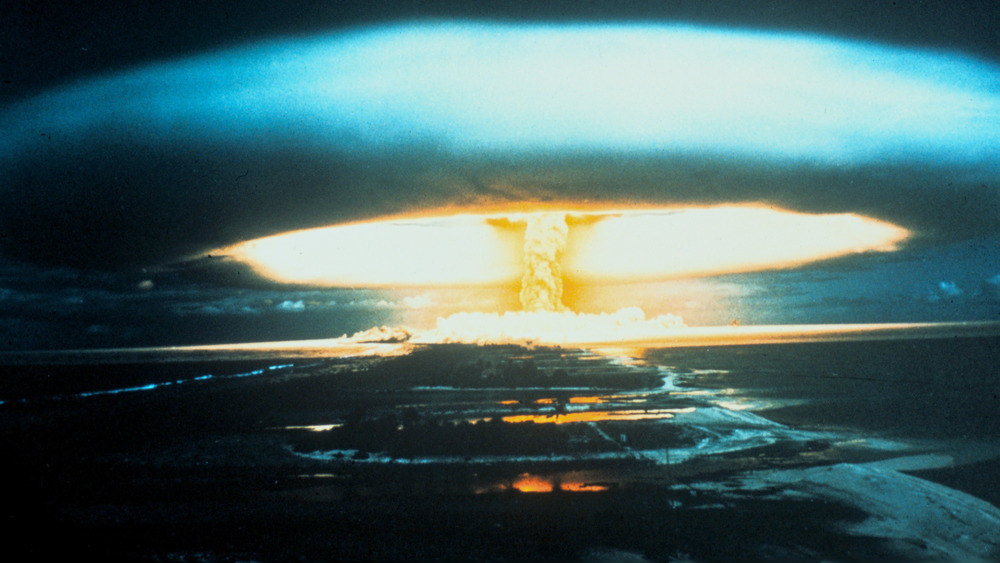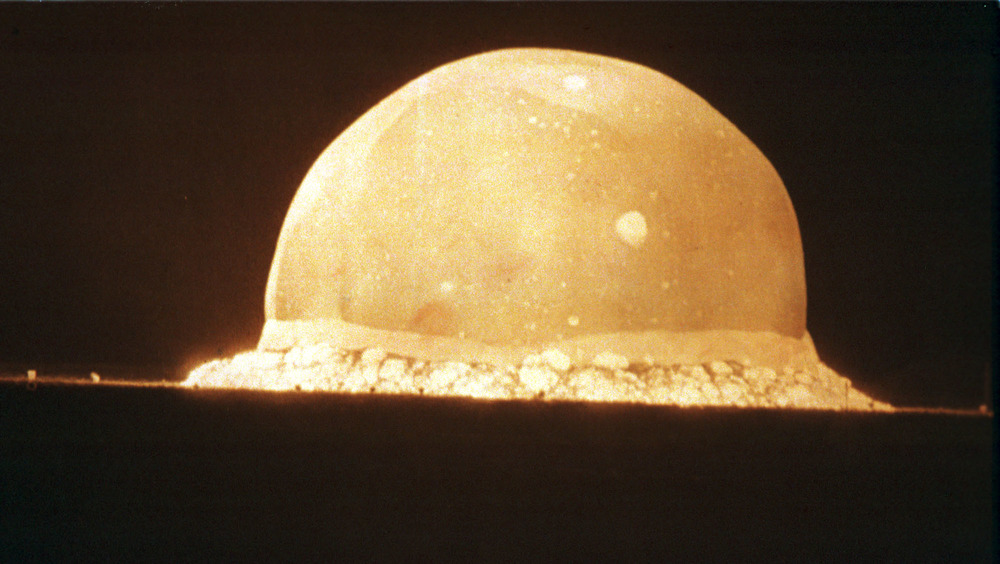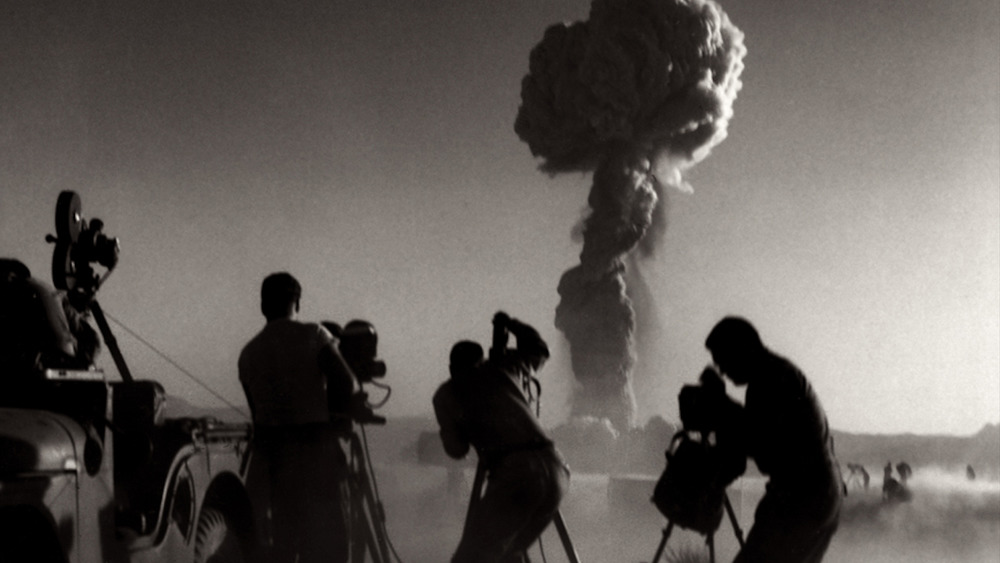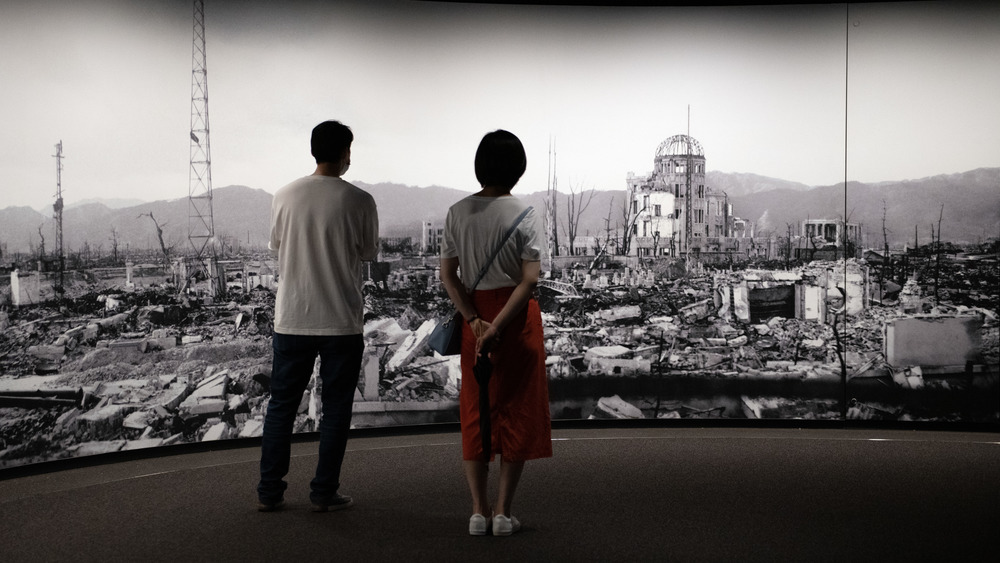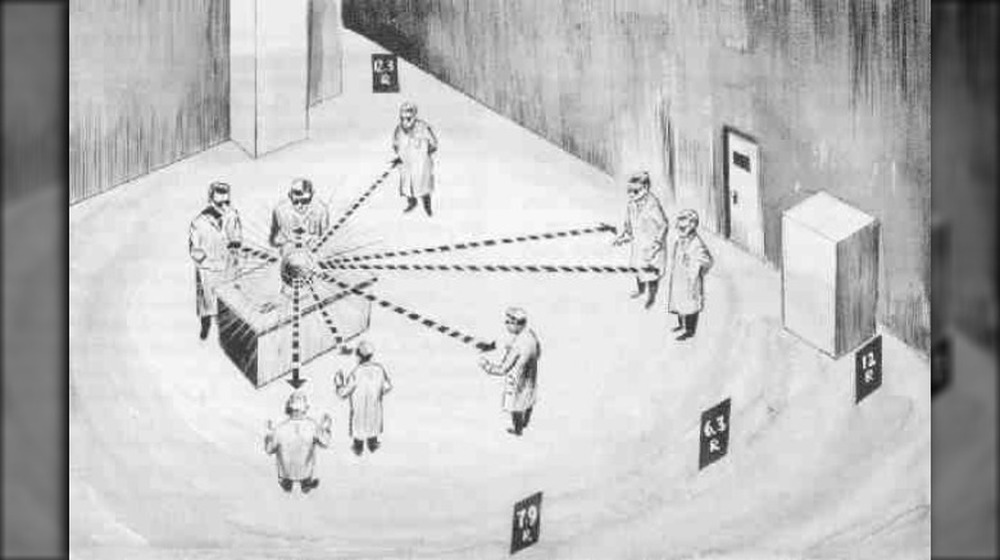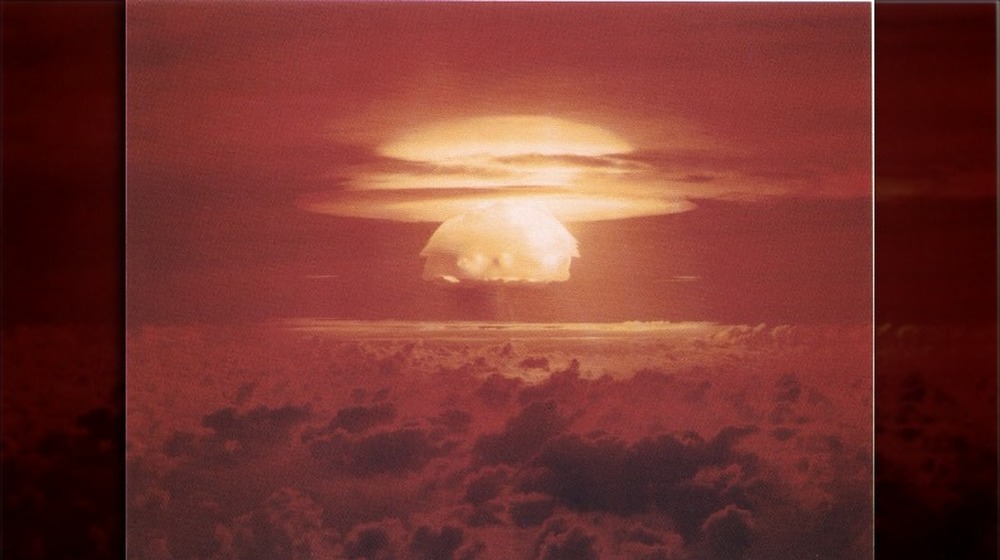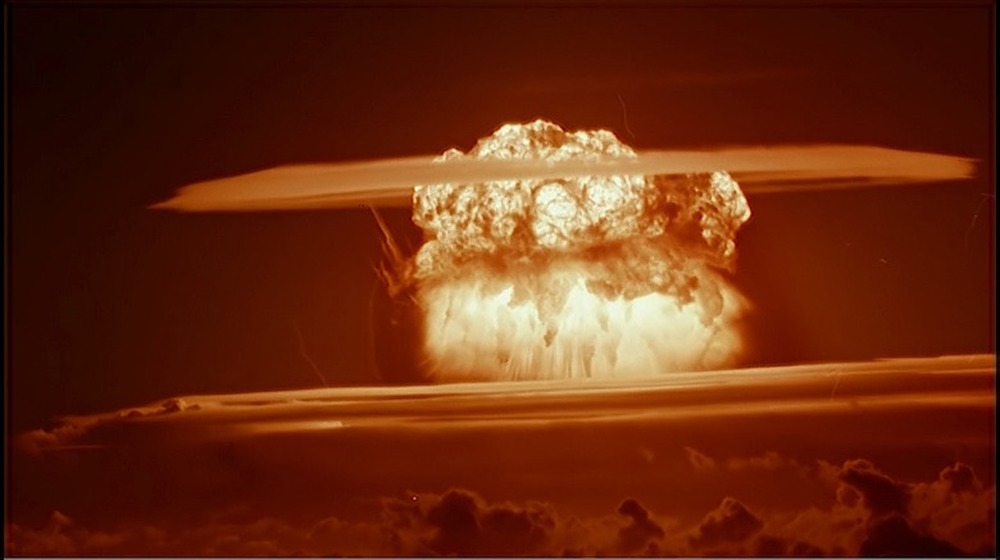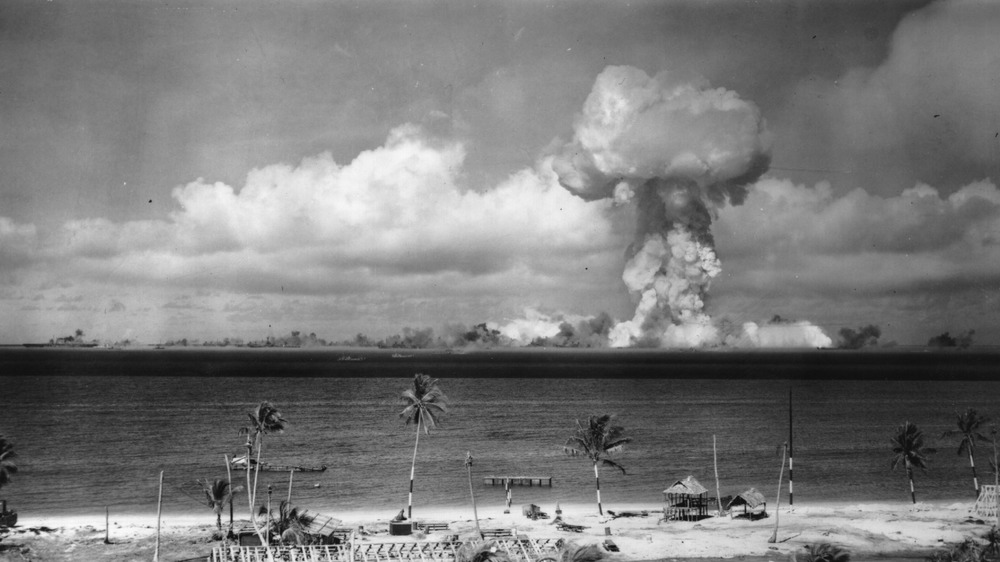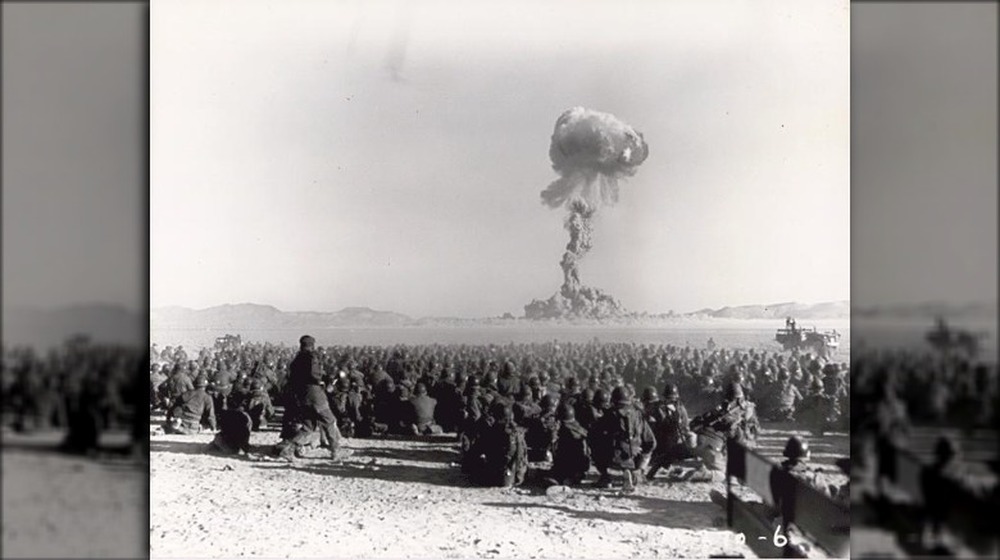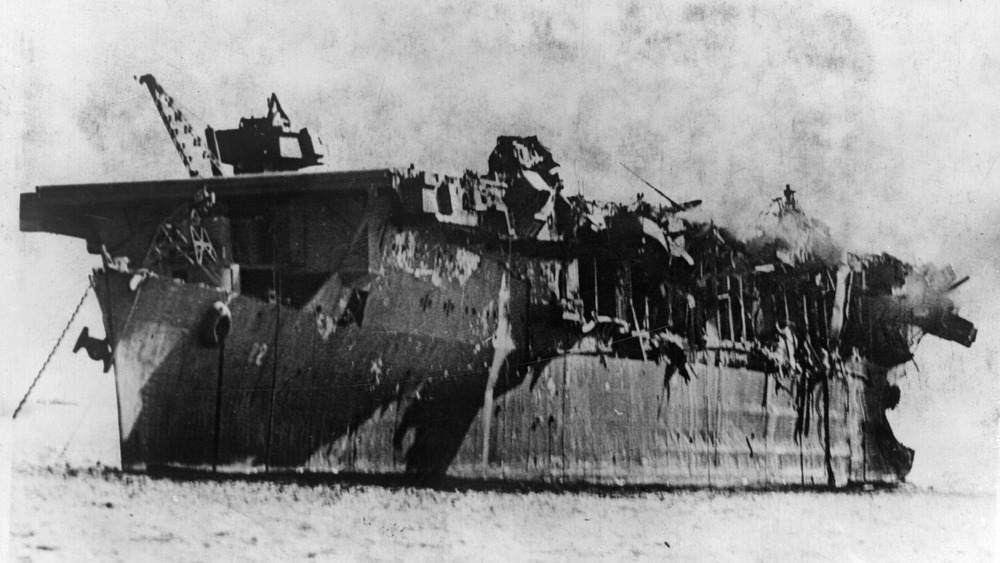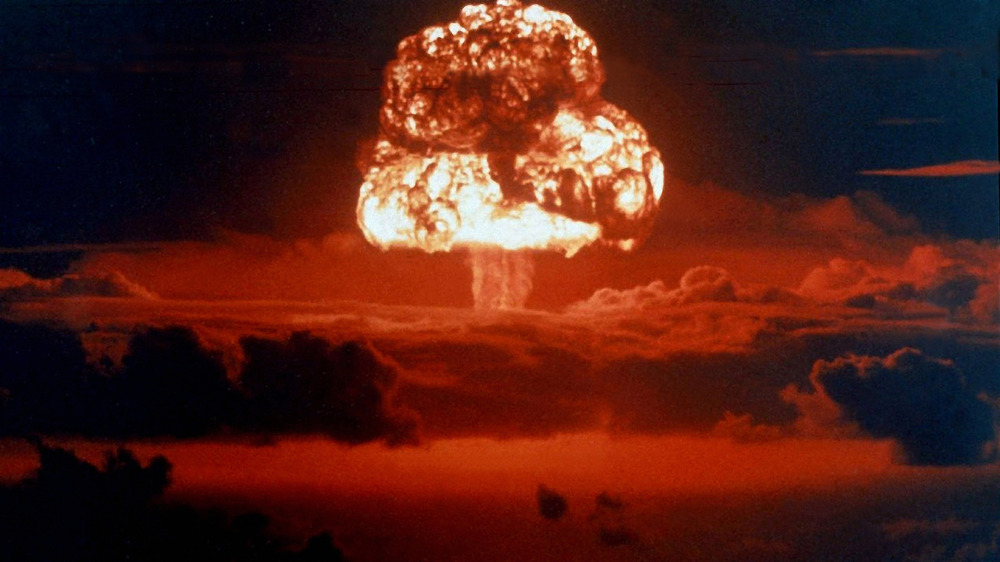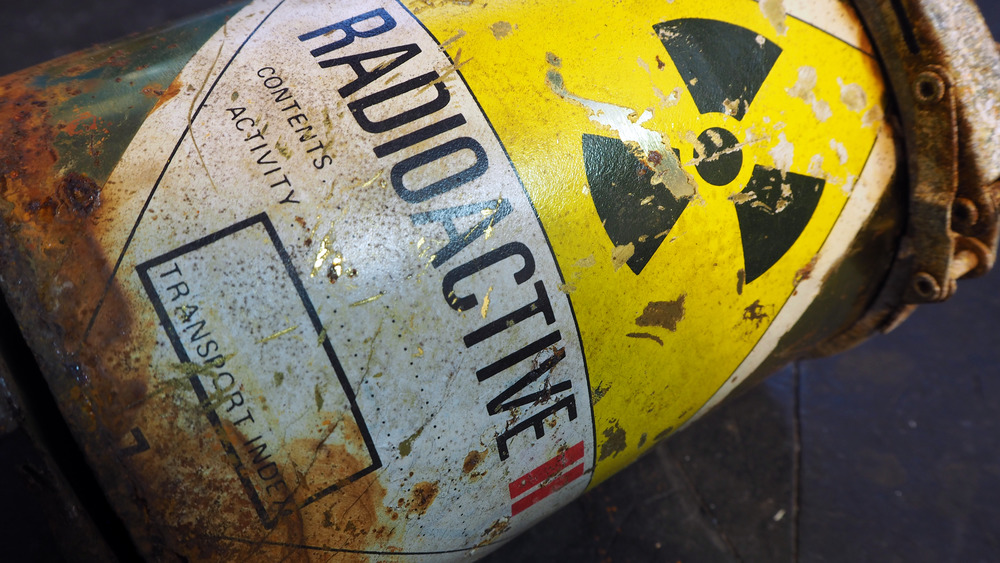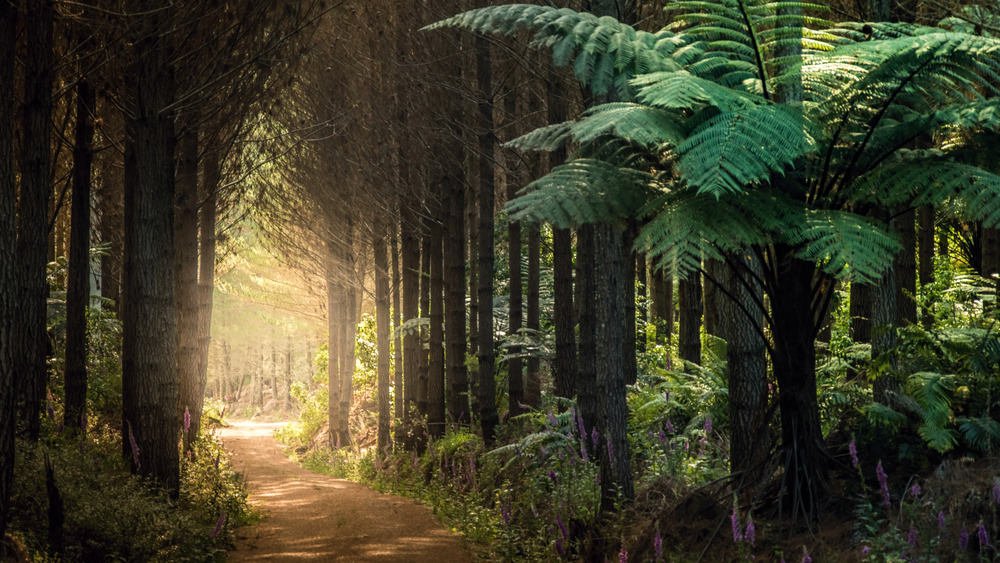The History Of Nuclear Weapons Is More Messed Up Than You Thought
When it comes to nuclear weapons, things escalated quickly.
It started in earnest with the Manhattan Project — that was set up by the United States in August of 1942, and according to ICAN, it was just less than three years later that the first nuclear test was conducted. Bombs were dropped on Japan only a month later, and those days remain some of the most infamous in world history. It was the moment that everyone stopped and looked to the skies and realized that warfare — and the world itself — was now very, very different.
By 1946, the U.N. was both setting up commissions to deal with the now-real threat of nuclear weapons and to try to eliminate them all together. That obviously hasn't worked well, even though the world knows just how devastating these weapons can be.
And here's the thing — the act of dropping a nuclear bomb during a time of war and dealing with the aftermath isn't the only terrible thing that has come out of this industry. Not by far.
The aftermath of Trinity
Three years after research into nuclear weapons started, the first was set off in the desert of New Mexico. It was named Gadget, and according to the Atomic Heritage Foundation, project leaders chose the Jornada Del Muerto Desert because it was flat, had little wind, and was incredibly isolated. (The desert's name seems to have had nothing to do with it, although it definitely could have — it translates to something along the lines of "single day's journey of the dead man.")
The closest people to the bomb were a mere 10,000 yards away when Gadget was dropped — and went off with an explosion slightly larger than the one that destroyed Hiroshima. Today, background radiation at the site is still about ten times higher than normal, although it's safe enough to be opened as a National Historic Landmark district.
The Trinity test's legacy isn't over. In 2020, the National Cancer Institute released (via ABC News) the results of a study that looked at whether or not the tests impacted the cancer rates in the area and said while it was "impossible to know with certainty," they do know a few things. Those who live downwind of the tests say their communities have suffered high instances of cancer and birth defects, there was a rise in infant mortality immediately following the tests, and the government was aware of the fact that fallout could be a major problem for those living in the area.
The atomic soldiers
Between 1945 and 1962, the U.S. conducted a shocking number of nuclear tests on domestic soil — 230 above-ground tests, to be precise. Forbes says that during those tests, around 235,000 military personnel were involved, and around 20,000 British soldiers also saw atomic blasts up close and personal.
British soldier Douglas Hern told Motherboard that it was a "defining point" in his life. He continued, "When the flash hit you, you could see the x-rays of your hands through your closed eyes. Then the heat hit you, and that was as if someone my size had caught fire and walked through me. It was an experience that was unearthing. It was so strange. There were guys with bruises and broken legs. We couldn't believe it."
David Hemsley was just 18 years old when he was on site for a test, remembering, "If I was looking at you now, I would see all your bones. You would see all the blood vessels."
Did it have a lasting impact? Not according to the official research published in the International Journal of Radiation Biology. While researchers say that the radiation had "no statistically significant" occurrence of things like cancer, sterility, and other health problems, those that were there say otherwise. According to soldiers like George Coleman (via ICAN), not only were they given no choice, but they suffered things like radiation burns and lifelong health problems ranging from hair loss to cancer. Many were denied compensation.
Hiroshima and Nagasaki
However bad the nuclear weapons dropped on Hiroshima and Nagasaki during World War II might seem, it's the simple truth that they were actually much worse.
The crew of the Enola Gay — the B-29 that dropped the bomb on Hiroshima — had no idea what they were carrying. They knew it was something big, but words like "atomic" and "nuclear" were never shared. It was only when they were on their way home, looking in the figurative rear-view mirror, that copilot Robert A. Lewis wrote, "I honestly have the feeling of groping for words to explain this or I might say, my God, what have we done?" (via Business Insider).
Second Lt. Russell Gackenbach was the last surviving member of the crew of the Enola Gay, and in 2018, he told NPR, "After 73 years, I do not regret what we did that day. All war's hell."
Meanwhile, there's another side of the story, too — the side of people like Yoshitaka Kawamoto. He was 13 years old when the bomb hit about half a mile from where he was going to school, and in the wreckage, he found his friend, Ota. He remembered (via Time), "I could see that his back was broken ... Ota was looking at me with his left eye. His right eyeball was hanging from his face. ... He took a student handbook from his pocket. I asked, 'Do you want me to give this to your mother?' Ota nodded. A moment later, he died."
The vengeance of the demon core
The U.S. dropped two bombs, Fat Man and Little Boy, and there was a third core built. Science Alert says it was originally given the code name Rufus, but it wasn't long before it earned itself another — the demon core.
After Japan's surrender, Rufus was kept at the Los Alamos Lab where scientists performed high-risk experiments they called "tickling the dragon's tail." They essentially wanted to know how far they could push it before triggering the supercriticality that would result in the deadly reaction. And yes, it proved as dangerous as it sounds.
The first casualty was Harry Daghlian who, on Aug. 21, 1945, was working on building a wall of tungsten carbide bricks around the core. Unfortunately, he dropped one of the bricks directly onto the core, and, reflexively, he reached out through the tingling blue glow and the heat to pick up and move the brick. After 25 agonizing days, he was dead.
Security protocols didn't improve, not immediately, at least. A year later — on May 21, 1946 — a physicist named Louis Slotin was conducting a similar experiment when he dropped a screwdriver on the core. This time, eight people were exposed to the wave of radiation as it went supercritical, but it was Slotin who died just nine days later. The aptly named demon core was ultimately melted down and the plutonium returned to the stockpile.
The massive mistake that was Castle Bravo
According to the Comprehensive Nuclear Test Ban Treaty Organization (CTBTO), the U.S. has held 1,032 nuclear tests between 1945 and 1992. That's a shocking number, and more shocking? Some have gone terribly wrong. On March 1, 1954, an operation code named Castle Bravo launched a hydrogen bomb into the middle of the Pacific. Only, it wasn't exactly a barren wasteland, and it wasn't exactly the explosion they'd been expecting.
John Clark was the deputy test director for the Atomic Energy Commission, and when he and his men emerged from their bunker to look up at the mushroom cloud, his Geiger counter started crackling a warning. They — 20 miles away from ground zero — were getting fallout in a place that should have been safe.
The Castle Bravo explosion ended up being three times larger than they had expected, and it was a full 1,000 times more powerful than the bomb that destroyed most of Hiroshima. The blast vaporized 10 million tons of coral, which fell over a huge swath of ocean. Fishermen on a boat 70 miles away suffered severe radiation burns, and as the ash fell, the children of nearby Rongelap island played in what they thought was snow. It wasn't.
The Atlantic says that the tests had two very different outcomes — it sped up the Soviet Union's quest to build a bomb that was just as big, and it also laid the groundwork for treaties that would restrict above-ground testing.
The fallout from Castle Bravo
The detonation of the bomb of Castle Bravo made an unbelievable mess, one that Mongabay says started with the complete destruction of three nearby islands. They also say that the radioactive fallout covered a shocking 7,000 square miles, and for comparison, New York City is a mere 303 square miles.
Among the worst hit was Rongelap Atoll, which was quite literally covered with radioactive debris. No, literally — it was an average of an inch thick and spread all over the atoll and the surrounding coral reefs. In 2018, divers headed out to Rongelap to see just what progress the coral reefs had made and found that hot ocean currents in 2014 had bleached and killed much of the marine life that was there.
There's good news and bad news. The good news is that researchers found the marine ecosystem to be incredibly resilient in the face of things like nuclear testing, but when it came to the current state of global warming, the bad news is that some serious damage was still being done.
That's not to say Castle Bravo hasn't had much of an impact on the environment, because it has — on a global scale. The Atlantic says that the explosion (and others like it) generated a massive amount of the radioactive carbon isotope called carbon 14, and hydrogen bombs have created so much of it that researchers have found it in every living thing they've tested.
The evacuations of Bikini Atoll and Rongelap
The residents of Hiroshima and Nagasaki aren't the only civilians to have their homes destroyed by atomic weapons.
In 1945, then-President Harry S. Truman gave the go-ahead for more weapons testing, and a new testing ground — supposedly well away from most air and ocean traffic — was chosen: the Bikini Atoll. There was one problem, though, and that was the fact that people were living there.
The Guardian says that in 1946, the 167 people living on Bikini Atoll agreed to leave. They were moved to another island called Rongerik, but there was so little food that they quickly found themselves facing starvation. They were shuffled around again and again, living in tents on airstrips and on island after island where food sources were so scarce that starvation was constant. Nuclear testing, meanwhile, destroyed their little piece of paradise, and by the time testing ended in 1958, it was uninhabitable. They resettled there in the early 1970s, but when people started getting sick and dying, it became clear that cleanup efforts hadn't actually worked, and the food grown there was deadly.
The residents of Rongelap didn't fare any better. They weren't evacuated until after they'd already been exposed to radioactive ash, and it was left to Greenpeace to step in and evacuate them.
Atomic viewing parties were all the rage
It was Harry Truman — the same president who dropped the bombs on Japan — who designated a 640-square-mile patch of the Nevada desert to be designated as the Nevada Proving Grounds. According to PBS, it was the only above-ground nuclear test site that was active in the continental U.S. during peacetime. And here's the thing — Las Vegas was a little worried, because they were only about 65 miles away.
That's not far at all, and this is when a weird thing happened. They embraced their proximity to the testing sites, re-branded themselves as the Atomic City, and started throwing some fallout-style parties... Vault suits optional.
The first test was done on Jan. 27, 1951, and the local Chamber of Commerce immediately added "mushroom cloud" to their list of things to see in Vegas. And people absolutely came. Some got reservations at the Desert Inn's Sky Room for a panoramic view of the mushroom clouds, while others packed lunches and headed into the desert to get even more up close and personal. The booming tourist trade — along with the military personnel stationed there — brought a huge amount of cash into the area, and Vegas was the hottest spot to be.
Until, that is, area farmers started complaining their livestock were suffering from the radiation fallout. Testing was banned in 1963.
The U.S. nuked ships filled with animals to see what would happen
After the detonation of the bombs over Japan, the world saw what happened when nuclear weapons were used. The U.S. military wanted to know more, and when they started doing more testing in the Pacific Ocean, they had scores of unwilling test subjects.
The Atomic Heritage Foundation says that the point of Operation Crossroads was to find out just what would happen to naval warships if they were hit by nuclear weapons (like the one pictured). They were a little odd in that they were publicly announced, the press was invited, and the warships were filled with animals.
According to Cold War LA, hundreds of animals — including goats, pigs, and smaller animals like rats, mice, and guinea pigs — were either caged or restrained in metal frames on board the ships. About 10% died immediately during the blast, more died after days or weeks of suffering, and those that survived were later killed and examined. There was a single survivor, pig #311, who escaped the test ship and was later re-captured swimming in a nearby lagoon.
Little #311 was re-homed at the Smithsonian's National Zoological Park, and the incident sparked mass protests over the use of animals in nuclear testing.
The death toll has been staggering
Nuclear testing is extremely controversial, and there's some recent research that makes it even more uncomfortable.
In 2017, the University of Arizona published a paper that looked at just how the U.S.'s nuclear testing impacted the health — and mortality — of citizens. The findings were dire. "The cumulative death toll attributable to nuclear testing is seven to fourteen times larger than previous estimates."
The paper took into account things like radiation that had entered the food supply through dairy products — which the National Cancer Institute had named as "the primary vector" of radiation in the food chain — along with studies that had examined radiation that was spread by the wind and made it into the food chain via other methods, like being absorbed into wheat and grains. Their estimates suggest that between 1951 and 1973 alone, the fallout and radiation from nuclear weapons testing contributed to somewhere between 340,000 and 460,000 deaths. For an idea of scale, the Atomic Archive says that around 135,000 people died during the bombing of Hiroshima, and 64,000 died in Nagasaki.
They also looked at something they called the "social costs," which Economics Help defines as the amount of money that an action costs both private individuals and society as a whole. Researchers suggest those deaths cost the U.S. somewhere between $473 billion and $6.1 trillion.
The problem that is nuclear waste
Nuclear weapons haven't just created immediate problems for the world, they've created long-term problems that people are going to be dealing with for generations. According to Chemical & Engineering News, the global stores of highly radioactive waste material sit at more than a quarter million metric tons in 2020. (For comparison, that's about ten times the weight of the Statue of Liberty.) Most of that is waste material from either nuclear power plants or nuclear weapons, and no one knows what to do with it.
It's not just a massive problem, it's a literal ticking time bomb. Some of it has been sitting in "temporary" storage since the 1940s, and containers are getting to the point where they're dangerously degrading. These containers are absolutely leaking, and there's no immediate — or easy — solution in sight.
Even "solutions" that have been put in place have turned out to be not solutions but a quick fix that's made it someone else's problem. According to the LA Times, the U.S. built a nuclear waste repository in the Marshall Islands to hold enough nuclear waste to fill 35 Olympic swimming pools. They covered it with a dome, but even as the Marshall Islands is raising the alarm and pointing out that it's leaking, the Department of Energy has responded with a less-than-stellar, "No worries! No biggie, guys, really."
The trees that trace our nuclear history
The effects of nuclear testing aren't just long-lasting, they're global — and in 2020, New York Times columnist Carl Zimmer set out to prove that (via The Atlantic).
To do it, he headed to Cape Cod, Mass. — 7,300 miles away from the nuclear testing grounds in Bikini Atoll. There, he visited the Woods Hole Oceanographic Institute, where they were studying the cross-section of a tree that had been planted in 1870 and succumbed to rot 150 years later. The cross-section was sent to Mary Gaylord, who just happened to be an expert in a radioactive carbon isotope created by a nuclear explosion — carbon 14.
When she sampled the levels of radiocarbon in the rings of the tree, what she got was a map of the nuclear timeline. Carbon remained level until the ring that corresponded with 1954, and as more and more testing was done, the tree gained more and more carbon — until 1963's Partial Test Ban Treaty.
Then, it started to decline but at a much slower rate than it accumulated. The last ring in the tree still contained levels of radioactive carbon that were 6% higher than pre-test levels, and it wasn't just the tree that she's mapped — from trees in Cape Cod to trees in New Zealand and coral reefs in the Galapagos, the history of mankind's nuclear testing is written loud and clear.
